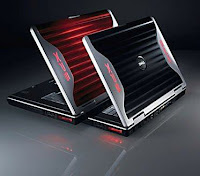 How to Boost Computers/Laptops Performance
How to Boost Computers/Laptops PerformanceClear the startup programs: When you start up Windows, several programs start and get loaded on to memory. These take up precious memory. Ideally, you should remove them using the settings provided in the programs themselves. But, if you can’t, then use Startup Control Panel to do that. This program after its installation will be found in the Control Panel.
• RAM: A machine’s speed can be simply improved by adding more RAM rather than going for a CPU upgrade. Get some additional RAM and see the improvement. If you have adequate RAM, but memory supply seems to be bottlenecked, then use RamBooster. It routinely frees some memory and can be custom adjusted for your needs. There are several such programs, but most of them make your system unstable. I had found no such problems with Rambooster.
• Watch the programs in memory: Using software such as TaskInfo to find out which are the programs that are running in memory and weed out those that you do not need.
• Three-button salute: If you cannot get software such as Taskinfo, then just press Ctrl+Alt+Delete combination once to bring up the Close Program dialog box. Ideally, when you have all programs closed and your taskbar is empty, there should be just three programs in this box - explorer, system tray, and your antivirus program. All other programs should be a waste. Most common culprits are Microsoft office, RealPlayer, Winamp, antivirus scheduler, etc. Just remove all those that are not needed using Startup Control Panel or using msconfig from the Run dialog box.
• Increasing the performance of individual programs: You can increase the speed of a program, by setting the priority of the program’s process thread to either High or Realtime. Use TaskInfo (in Win 9x/ME) or Task Manager (in Windows 2000 by pressing Ctrl+Alt+Del). Do not go overboard on this or your system will look very unresponsive.
• Active Desktop: Unless you run stock market price tickers on your desktop, deactivate Active Desktop to save memory. If you have enabled Active Desktop just to enable a GIF or JPEG file as the background, then convert the file to a BMP file and set that as the wallpaper without Active Desktop.
• Plain desktop: Remove the desktop background image and set it None. This will save some memory.
• Screen resolution: Set your screen resolution to 15 bit or 16 bit for both speed and saving memory. Set a higher level only when playing games and other such special stuff that require better resolutions.
• Clear the Desktop: Remove all unwanted icons from the desktop and shortcuts from the desktop and the quick launch bar. If you have shortcuts for CD drives, windows will check for their contents every time it loads up and cause a delay.
• Delete sound events: If you remove the sound events, your operations will get faster and are less likely to hang. To do so, go to Control Panel » Sounds and Multimedia » Schemes and then choose No Sounds.


0 comments until now.
Post a Comment